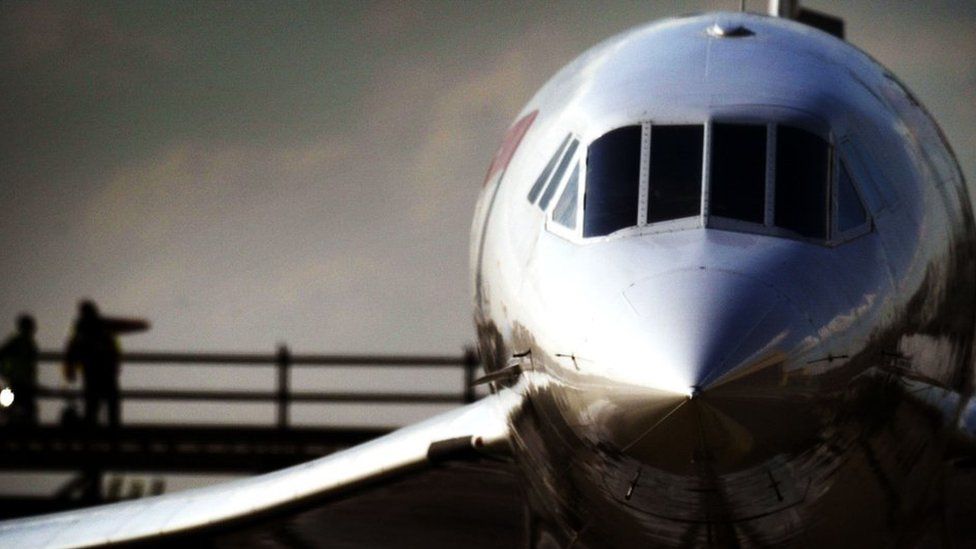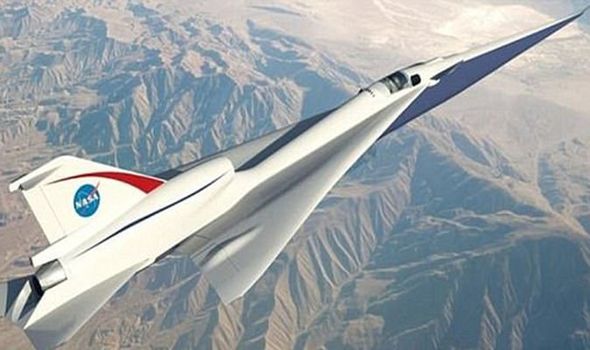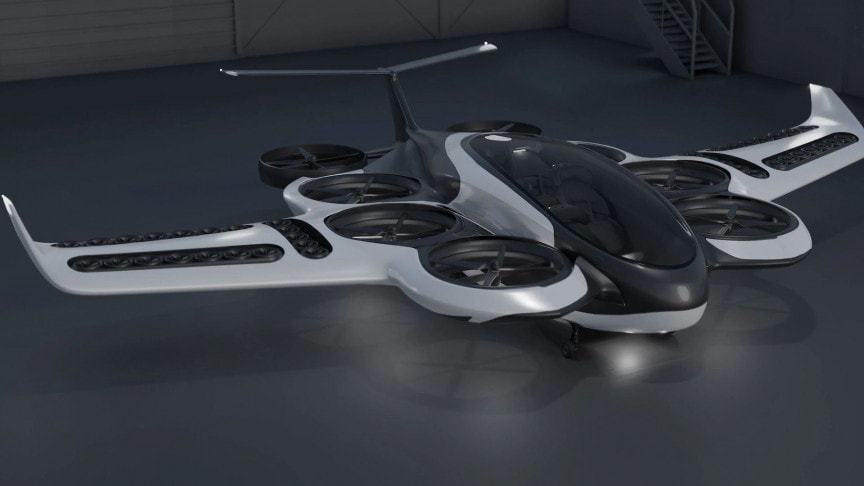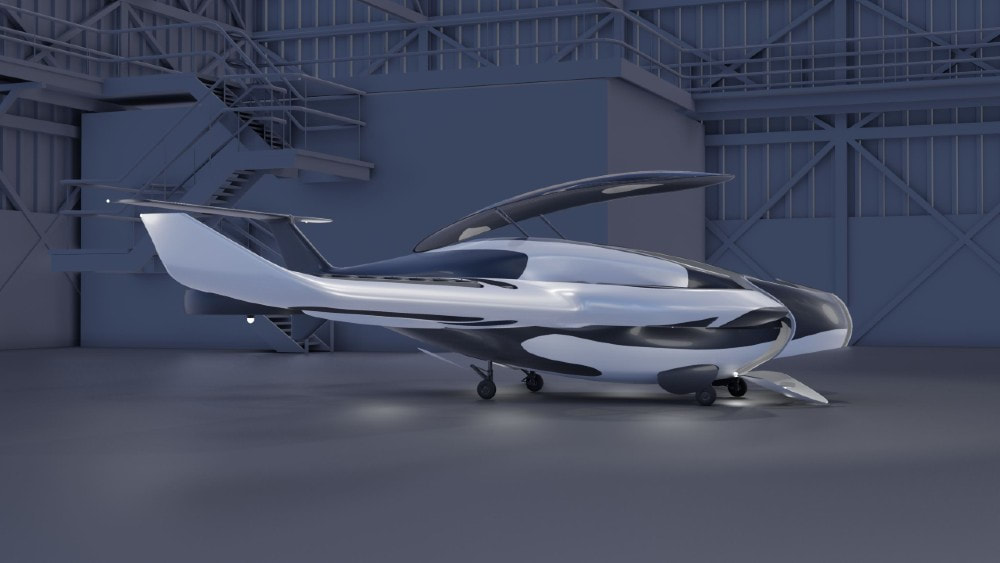|
Right now, it is still being built by NASA and aerospace company Lockheed Martin. It is tipped to soar through the skies faster than the speed of sound – a supersonic pace. This is just like what the original Concorde did before flights were stopped in 2003. The Concorde could fly from London to New York in a staggering three hours. And it could do so without giving off a loud sonic boom. That is because the X-59's engine is intentionally designed to sit in the upper section of the craft. This means it would produce a quieter 'thump' while travelling at speeds of around 1,074 miles per hour. And its 30-foot-long nose has also been designed to keep shockwaves down to a minimum. These are sparked by the movement of air particles when an aircraft travels faster than the speed of sound (767 miles per hour). Sonic booms generate colossal amounts of sound energy, at about 110 decibels. That is similar to the sound of an explosion or a thunderclap. Back when Concordes were in action, they would sometimes break the sound barrier and boom out the enormous noise. When fully built, it will measure 94ft long with a 29.5ft wingspan. NASA released an update on the recent tests online. Clayton Meyers, deputy project manager of NASA's Commercial Supersonic Technology (CST) project, said: “This is the team’s opportunity to get data at the low sound levels produced in the tunnel.
“It all comes down to our ability to measure the thump.” John Wolter, lead researcher on the X-59 sonic boom wind tunnel test, said: “With the X-59, we want to demonstrate that we can reduce the annoying sonic booms to something much quieter, referred to as sonic thumps. “The goal is to provide noise and community response data to regulators, which could result in new rules for overland supersonic flight. “The test proved that we don’t just have quieter aircraft design, but that we also have the accurate tools needed to predict the noise of future aircraft.” The scaled-down model is set to journey to Tokyo for more wind tunnel verification testing with the Japan Aerospace Exploration Agency and Boeing. NASA and Lockheed Martin are in the process of finalising the build of the X-59 at the Skunk Works facility in California.
0 Comments
Aviation agency Paragon has unveiled an eVTOL plane known as Soar with a staggering 800-mile (1,287-km) vary because of a powertrain that makes use of liquid hydrogen to increase its vary, a post from Rob Report explains.
The rear two of Soar’s eight giant ducted turbofans tilt to offer thrust whereas smaller followers on the plane’s fastened wings present management and stability and allow vertical takeoff and touchdown. Paragon says its eVTOL plane can have a spread determine of between 300-800 miles relying on the configuration and cargo. The company has designed a hybrid system that makes use of direct hydrogen combustion alongside a battery pack so as to enhance vary concurrently considerably decreasing emissions. Renders on the company’s web site present a six-seater car, although the company states that the “final version will be based on an FAA-approved airframe which may alter the commercial ready VTOL“. Take a have a look at the company’s present render video beneath. On its web site, Paragon makes use of the tagline “get your time back,” which is in step with the promise of many companies working in city air mobility, equivalent to Lilium and Hyundai, which not too long ago partnered with UK startup Urban-Air Port to build over 200 eVTOL vertiports. The airframe for Soar additionally reminds us slightly of the design for the Skybus plane developed by GKN Aerospace, which has an enormous proposed capability of 30-50 passengers for city commutes. A video on Paragon’s web site reveals how Soar might be used as an extremely quick aerial ambulance, with sufficient space inside for medical professionals to examine on sufferers as they’re being transported to the hospital. However, Dwight Thanos Smith, Paragon’s founder and chief visionary officer, instructed Robb Report that Soar will primarily be used to ship cargo and also will finally be used “for mainstream consumers that want to experience first-class travel at a ride-share rate.” Paragon recently announced it had purchased 730 acres of land in Brownsville, Texas on which it plans to build its personal manufacturing facility and vertiport. The company hopes to launch a prototype of Soar to the skies in 2022, earlier than formally releasing its finalized plane in 2024. |
Send us an email at [email protected] if you want to support this site buying the original Division of Aero Patch, only available through this website!
All
|






 RSS Feed
RSS Feed